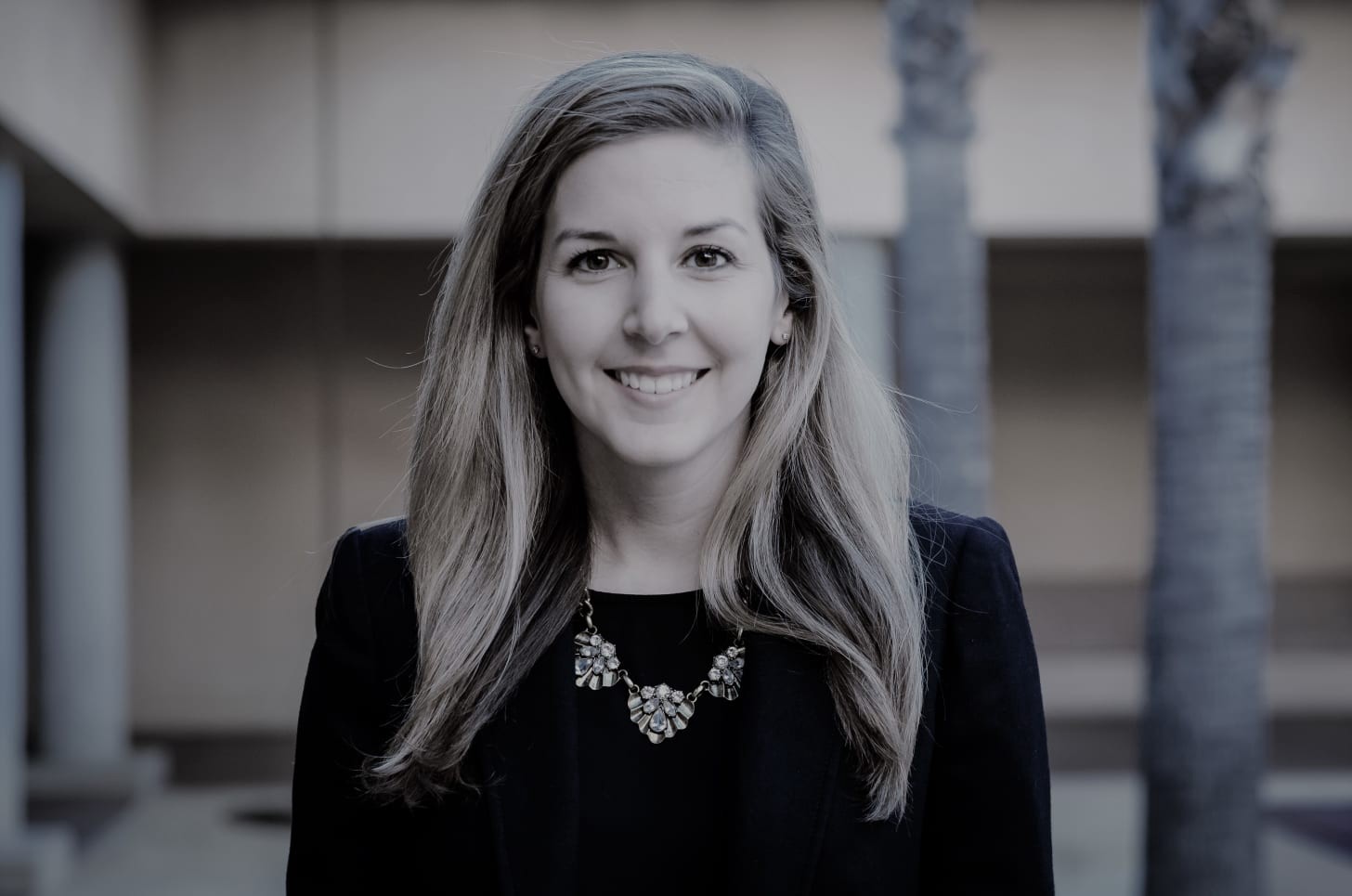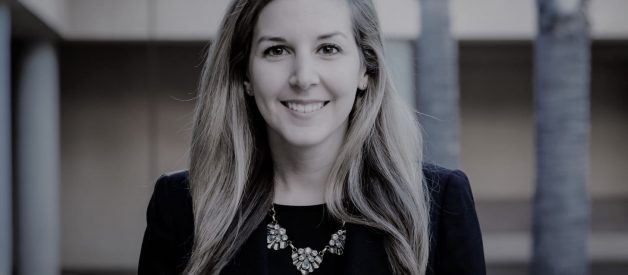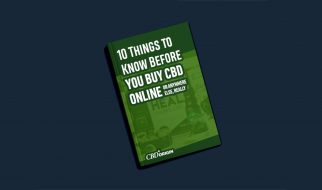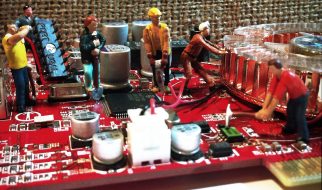 (Ashley Brasier, Partner at Lightspeed Venture Partners)
(Ashley Brasier, Partner at Lightspeed Venture Partners)
We are excited about today?s Edition of The Takeoff. Today?s interview is with Ashley Brasier, Partner at Lightspeed Venture Partners.
Ashley is a member of Lightspeed?s consumer investing team. Prior to joining Lightspeed, Ashley worked as a Senior Associate Consultant at Bain and a Category Manager at Thumbtack. She is a graduate of Duke University (BA) and Stanford GSB (MBA).
At Lightspeed, Ashley is part of one of the world?s leading venture capital firms. Since being founded in 1999, Lightspeed has invested in more than 350 companies, including the likes of AppDynamics, MuleSoft, Calm, Cameo, Carta, Epic Games, Grubhub, Snap, and Stitch Fix, among many incredible others.
The firm recently announced the closing of $4.2B in capital across three new funds (Read more, here). These new funds were actually announced the morning of our conversation!
The interview took place via a phone call between Ashley and Michael Spiro (Founder at The Takeoff) on April 14.
You can find Ashley on Twitter @AshleyBrasier.
We hope you enjoy today?s Edition.
Michael: To start, how exactly did you come to join Lightspeed, and what type of companies do you focus on?
Ashley: I joined Lightspeed after graduating from Stanford?s Graduate School of Business. When I was at Stanford, I initially thought I wanted to be an entrepreneur. I took lots of classes in the entrepreneurship space. For example, there was one class called Startup Garage, where I worked with a friend to help start an Indian beauty company, and another class I took called Formation of New Ventures, where we got to meet successful entrepreneurs, most of them Stanford alums, and hear their stories and hear the positives and negatives of starting a venture.
I was pretty certain I wanted to go down that path and was looking, specifically, at building something that would help with the aging population and address the large group of boomers that are about to go into retirement. I spent some time the summer after graduation thinking through that idea but ultimately came to the realization that I like taking a portfolio view and portfolio approach to business and looking across a number of different industries and different business models, which was a mindset I had at Bain when I was diligencing companies in the private equity group.
It is also something that I realized is part of my skill set ? the ability to look broadly and identify patterns and get conviction behind the future and innovations that are going to be important to progressing society forward.
Once I started going down that route, I was introduced by someone else at Stanford to Alex Taussig (Partner at Lightspeed), and we had a nice lunch and talked about my thesis on the aging space and my thesis on some other spaces. I felt like we clicked, and that conversation opened up conversations with other partners at Lightspeed and I eventually got an offer to join the partnership.
It wasn?t a linear path to Lightspeed, but when I look back on it, it makes a lot of sense because Alex had just recently invested in an entrepreneur who was my colleague when I was working at Thumbtack. So, there was that connection. At the time, I was also doing a consulting project at BetterUp, which is in the Lightspeed portfolio, and then beyond that, we had a few connections in common and entrepreneurs who we both knew.
Michael: Awesome! I?m curious, you spoke a little bit about how some of your previous experiences played a role in you becoming a venture capitalist and becoming a Partner at Lightspeed. Could you maybe discuss a bit more about how your experiences at Bain, Thumbtack, and Stanford Graduate School of Business helped prepare you for the world of venture?
Ashley: I think Bain was all about building up my business toolkit. So, really understanding what are the core components of a business. Thankfully, at Bain there are a lot of different frameworks that they have to help people think about a business in a structured way: things from strategy to people and roles, processes and systems, and then culture.
Bain helped me identify what are the fundamental building blocks of a company, how they all fit together to make a company work really well, and what the ingredients are that you need in order to have a high-performance company.
Thumbtack then helped me understand what you need to do at the earliest stages of building a company to set it up for success. Thumbtack was around 50?60 people when I first joined, and by the time I left, about a year and a half later, I think the team was well over 200.
I was there at Thumbtack at a time of really rapid growth. That gave me a sense for how to manage a fast growing organization. It helped me put some of the core principles I learned at Bain into action.
I also gained first hand experience working with designers, copywriters, product managers, and engineers, so I really came to understand the full stack of roles at a startup, the people that are in those roles, and how to catalyze diverse teams to ultimately act on something and to put something into place and to really build and grow the business.
And, then Stanford was two years of reflection; two years of pulling up to look at the business landscape, look at different industries, try my hand at starting something, and meet a lot of different people and hear their perspectives on business. It was definitely a more academic approach to business, which was useful for me because in undergrad I was not a business major and did not study business or economics. Stanford was helpful to solidify the foundation and put a lot of the experiences I had at Bain and Thumbtack in context.
Michael: Really, really informative there. I know that at Lightspeed you focus on consumer and, in particular, early-stage companies. I?m wondering, what most excites you about consumer and why early stage?
Ashley: Consumer is really exciting for me because a lot of it is about psychology and behavior. It is about thinking through how people?s behaviors are going to change as the macro environment changes: What are people going to do differently, and how are they going to shop differently?
Consumer is really on the cutting edge and is driven by new technologies that entrepreneurs are creating. I personally find that super intrinsically interesting. We see things at the earliest stages and then 5, 6, or 7 months later, you actually see it out in the wild and see how it is impacting people?s lives for the better. That is really motivating for me.
Early stage is fun for me because it?s more creative and you are working with the entrepreneur to solve problems about the future direction of the company. It?s much more ideation-based, much more diffusive thinking-based, versus growth stage. In growth, you already have the core business and it?s about the scale-up.
Michael: I really love your perspective there. Looking through your profile on Lightspeed?s website, it discusses your use of prototyping while at Thumbtack as a way to obtain feedback and rapidly iterate. So, now obviously working with early-stage companies, can you discuss a little bit about how founders and entrepreneurs can actually use prototyping in the early days of their businesses?
Ashley: Certainly. I think prototyping is a great tool to see if an idea is going to stick or not. When I did a lot of prototyping at Thumbtack, it was in the context of user research. It would be things like drawing up a wireframe for how I thought a part of the website might look when having different features and different versions of the site, handing those pieces of paper with literal Sharpie drawings that I had made over to someone who was a real user of the product, and seeing which ones they thought would be useful or not.
Then, as I had more and more of those conversations, I would update the wireframe, or I?d make a new wireframe, and then eventually a product manager and a designer would sit down and come up with something a little bit more solid.
The direction that I was able to provide to a product manager or to a designer was much better if I had done the work to understand what users actually wanted. It was basically a series of prototypes that ultimately got to the best outcome for the user.
Michael: Great, and super interesting there. I know that Lightspeed has invested in a few companies over the past few weeks, and, obviously, just this morning announced the closing of three new funds ? (Our conversation was held on April 14).
What exactly has changed with the overall venture landscape these past few weeks as a result of COVID? I have been reading a lot of Twitter threads and posts discussing whether or not certain funds are ?open for business.? Can you maybe talk a little bit about how Lightspeed has been navigating these difficult times?
Ashley: For the past few weeks we have been focused a lot on supporting our portfolio companies and making sure that they are ready to face all the different changes that are happening from COVID. So, that has been a big piece of it.
We have been connecting our founders together who are in similar spaces so that they can talk through problems together and problem solve together. We have also been connecting functional leads together. We have had a number of webinars for portfolio leaders and those have been very well received.
But, beyond that, we are continuing to invest, and we are in a good position given that we just raised the funds, which were announced earlier today. My days are still full of pitch meetings and, in many ways, don?t look very different than they did a month or two months ago.
Michael: Amazing! It?s nice to see how different firms are reacting to the times. These next few questions are advice-related questions for our subscribers, the majority of whom are current college students, mainly undergrads, but I think we have a few graduate student subscribers, too.
The first question here is, what advice would you give to a student who is interested in breaking into venture capital post-graduation? Are there certain classes, clubs, skills, or anything else that you think are important to pick up while still in school to later become an investor?
Ashley: I think it?s important to go deep in a few different industries and really develop some subject matter expertise on a few different areas that you might be interested in investing in. In addition to that, as a student, I think you have the ability to email people and ask for their time and ask for their advice.I would take the opportunity to get to know people in the industry and hear their perspectives on the industry and how they think it?s going to change, and then ultimately compile all that information into a thesis, yourself, around what is an industry that?s going to be experiencing a lot of change, how is technology going to propel that change, and what types of companies or business models do you think will be the most successful in that new type of environment.
If you pull together a thesis that includes those elements, venture capitalists will be excited to chat with you to learn about your perspectives and learn about the different ways that you think the market is going to change. By opening up those conversations, you start to build a relationship with venture capitalists, and that is what this business is. It?s a relationships business.
By reaching out to people, you eventually get to know those people and then maybe job opportunities start to open up from there. Breaking into venture capital is, in most cases, not a linear path and there are rarely straightforward recruiting processes. It is more about getting to know people in the industry, both entrepreneurs and investors, before actually going through some kind of recruiting process.
Michael: Super insightful there. I think a lot of students that I speak to are sometimes afraid to reach out to founders and investors through cold emails and other channels. I think one of the reasons for this fear is that they are afraid to take up that founder?s or that investor?s time.
I?m wondering, is that something that students should be worried or concerned about? Or, as long as a student has a good understanding of the space and is really interested in learning from a certain founder or investor, should they have the confidence to reach out and try to hop on the phone and learn from them and start building a relationship?
Ashley: I would say that conversations should always be a two-way exchange of information. If I were a student, I would think to myself: ?what am I going to offer the investor in this conversation to make it valuable for them.? What I notice when talking with students is that students have the ability to share information about trends that people their age are seeing, that as a 30 or 40 year old investor you might not see.
It is super valuable to hear what apps you are using and what type of content you are consuming. Students also have the ability to share information about companies that their peers are starting, either at their school or maybe friends from high school or maybe even just people they read about online. Students are in a different population, a different flow of information, and that is valuable to investors.
When you write a cold email, I would think about offering your perspectives on Gen Z, offering your perspectives on the next wave of consumer social apps, and letting the investor know that you have a perspective on this and that you are excited to chat with them about it and that you?d also be interested in hearing their thoughts about the industry and their thoughts about venture capital.
Don?t be afraid to reach out, but think about what you are going to bring to the conversation.
Michael: That is really great advice. Thank you for that. That was super helpful on a personal level. Given everything that is going on right now, do you have any advice for students who may feel some anxiety about where the market and job opportunities will be when they graduate?
Ashley: I think it?s early, and we don?t really know how prolonged COVID is going to be and how prolonged a potential recession will be. So, it?s of course early to say, but there are going to be a lot of new companies that are built in these tough times and new companies that are going to be built that are addressing the consumer behavior shifts that are happening right now.
While there may not be jobs in the industry that you had your heart set on, there certainly will be jobs in spaces like digital events, online streaming/social, and telehealth. So, for students that are concerned, I would think about, what are the spaces that are actually growing and seeing a lift from the changing environment, and seek opportunities in those spaces.
Michael: I just have two more questions before we finish up. What was the most recent publicly announced investment that you were involved in, and what made Lightspeed so excited to back the company?
Ashley: Most recently, I invested in The Clean Liquor Company, which is a low alcohol company based in the UK, started by an entrepreneur named Spencer Matthews who is a TV star in the UK. Spencer went through his own journey with alcohol and has decided to drink less and so, wanted to start a low-alcohol brand that spoke to him and spoke to people like him.
We really got excited about The Clean Liquor Company given that Spencer?s story around this was so authentic, and we have seen a broader trend towards the health and wellness space and have invested in that with success so far.
We?ve invested in The Honest Company, Goop, Calm (the meditation app), and now The Clean Liquor Company, too. It?s part of a broader trend toward health and wellness.
Michael: Awesome, and that answer really transitions well over to the next question I had, which is related to physical and mental health. How do you stay physically and mentally fit given the high demands of your job? Do you have any type of fitness routine? Do you meditate, maybe using an app such as Calm, or do anything else like that?
Ashley: I think, first and foremost, it is important to have a routine; so, waking up at a similar time every day, eating breakfast, and just starting the day off on the right foot.
I have been enjoying taking walks around the neighborhood. I usually walk to work, and so that gives me a bit of time to listen to music and be mindful and get ready for the day ahead, but since we are working from home now and I am no longer walking to work, I have been using walks up to my local park as a moment for reflection and to be grateful for the things around me and to get excited about the day ahead and the work that I am about to do.
Michael: Great, that was really helpful. I definitely learned a ton from our conversation, so thank you very much for that.
Ashley: Those were great questions. I think we covered all the big topics!
Find Ashley on Twitter (@AshleyBrasier) and on Medium (Ashley Brasier)
** Please note that our interviews may be edited for length, content, and clarity **
Moderator: Michael Spiro (Founder at The Takeoff. Junior at Washington University in St. Louis. Incoming Summer Analyst at JMI Equity.)
I?m on Twitter @mspiro3 ?

Enjoying The Takeoff? Check us out on LinkedIn and Twitter and be sure to subscribe to our Substack to have future Editions (just like this) sent directly to your inbox!


